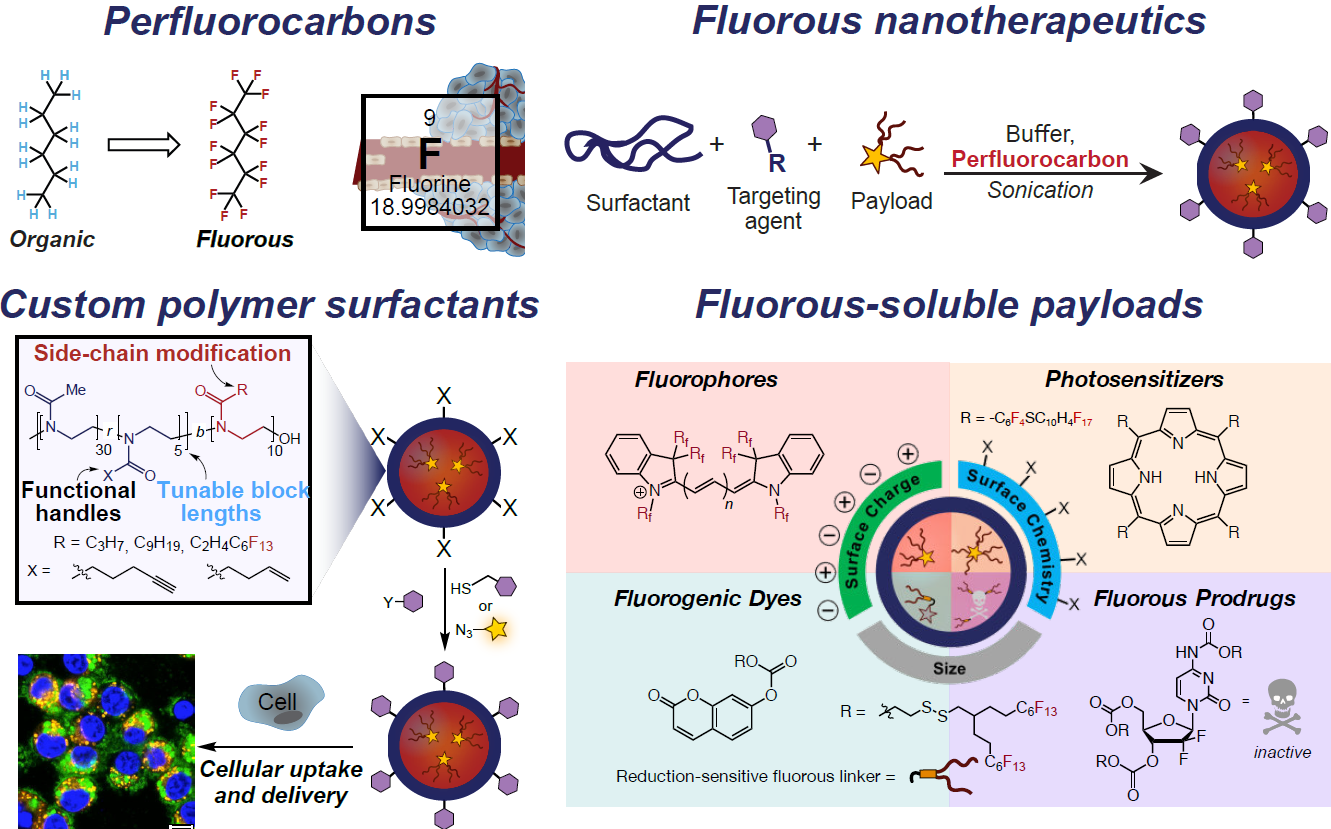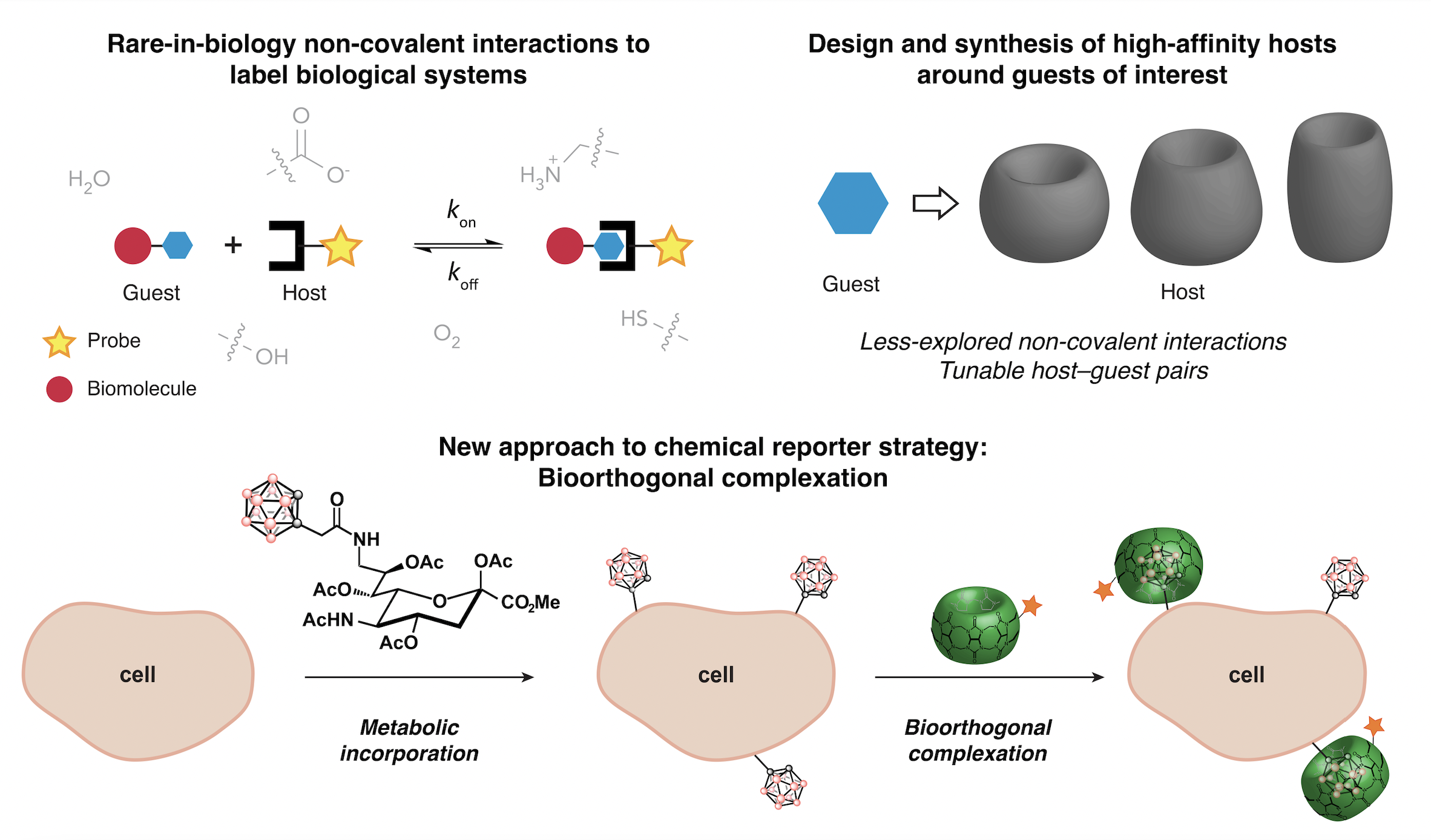Click here to explore our instrumentation.
Fluorous Nanotherapeutics

The Sletten Group takes advantage of the orthogonality of fluorinated compounds to engineer new smart, personalizable nanotherapeutics. Our lab takes a two-pronged approach, focusing on both fluorous delivery vehicles and the synthesis of fluorous-soluble payloads. Towards the former, we develop new polymers to stabilize, target, and release the fluorous payloads in vivo. Simultaneously, we synthesize novel fluorous-soluble payloads, including fluorophores, photosensitizers, and pharmaceuticals. These advances are then brought together to result in a modular platform for nanotherapeutics, allowing for stimuli-responsive treatment modalities to endogenous and exogenous triggers.
Shortwave Infrared Diagnostics
Fluorescence imaging is a safe, cost-effective imaging modality that enables real-time tracking but has not been readily employed in the clinic due to the poor penetration of light through tissue and high background signal from endogenous chromophores. These limitations can be addressed by utilizing the shortwave infrared region (SWIR or NIR-II, 1000-2000 nm) of the electromagnetic spectrum. However, there is a lack of commercially available imaging agents for this region. Our group works on developing small molecule fluorophores for the SWIR by employing a polymethine scaffold. Through synthetic modifications, photophysical characterization, and biological applications, we aim to employ these fluorophores for the next generation of optical imaging.
Host Guest Chemistry

Over the past few decades, bioorthogonal chemistry and the chemical reporter strategy have allowed for chemistry to be translated from the bench top into living systems such as cells, transparent organisms, and even small mammals. Our group is interested in further advancing this field towards new applications in biology by taking advantage of strong, rare-to-biology non-covalent interactions that are ubiquitous in host–guest chemistry. Through the design and synthesis of customized host and guest molecules, we seek to leverage the resulting host–guest pairs to study biological systems. This new detection strategy, deemed bioorthogonal complexation, will open new doors in biology and medicine, as a tunable alternative to covalent chemistries.
